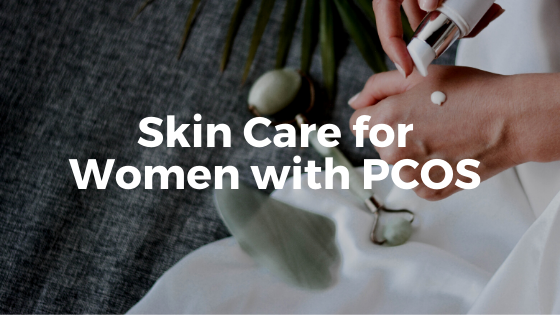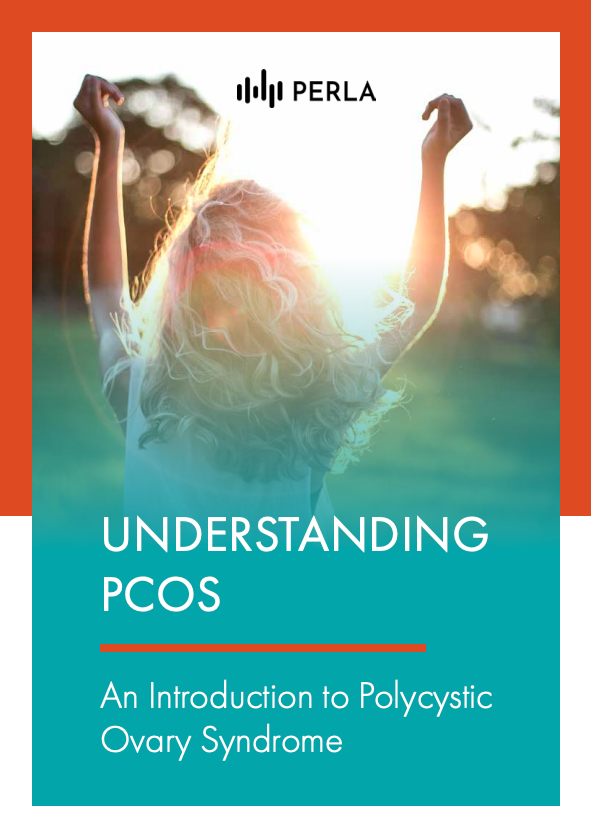Hormonal imbalances associated with polycystic ovary syndrome (PCOS) often bring frustrating skin problems such as cystic acne, oily skin, dandruff, and dark patches on the skin. Although PCOS is not yet curable, these symptoms are manageable. With hormonal medications and a good skin care regimen, it is possible to have a clear and healthy complexion despite PCOS.
The Importance of Skin Care in PCOS
Having acne when you are an adult can be very frustrating. Coupled with having too much hair at the wrong place (upper lip, chin, or abdomen) or not having enough in the right place (your scalp) – all these may be emotionally painful for you. Although it may not be true for everyone, PCOS confronts the traditional definition of feminine beauty1: smooth, clear, and apparently hairless skin.
Women with PCOS often have an overproduction of sebum due to increased androgen levels in the body, which makes their skin oilier than normal. Because of this, topical therapies are not easily absorbed in the skin and may be less effective.2 Also, the response to acne treatment may be slow in women with PCOS, thus selecting a therapy that you can adhere to is vital.
A PCOS-friendly skincare regimen must help:
- prevent the formation of clogged pores
- lower sebum production
- reduce acne-causing bacteria in the skin
If you are dealing with hormonal acne and oily skin, excess hair growth or scalp hair loss, dandruff, and dark patches on the skin (acanthosis nigricans), make sure to consult a dermatologist or endocrinologist who can help you develop an effective treatment plan and give advice on a skincare regimen that works best for PCOS.
How Hormones Affect the Skin and Hair3
The root of most PCOS symptoms are the high levels of androgens, but also circulating insulin in the body. Insulin resistance is a precursor of type 2 diabetes and is common in women with PCOS who are overweight or obese. It has been proposed that high insulin levels enhance the production of androgens in women with PCOS, and increased testosterone may contribute slightly to insulin resistance.4
Sex hormones can significantly affect the appearance, texture, and health of your skin. In general, the female sex hormone estrogen is good for the skin. It stimulates the skin to produce more collagen and elastin—important proteins that bind skin cells together—keeping it firm elastic. Estrogen also blocks the effects of testosterone on skin and hair. Male hormones—testosterone and its potent metabolite dihydrotestosterone (DHT)—increase oil production, aggravate acne, and cause the hair follicles to produce thick, dark, and coarse hair. They are also responsible for scalp hair loss and receding frontal hairlines.
Skincare Tips for Women with PCOS
PCOS is often diagnosed together with several dermatological conditions including oily, greasy skin and scalp, and painful cystic acne. You may develop skin tags—small flaps of tissue that form on the neck, armpits, and groin fold. Acanthosis nigricans may also occur, which is described as darkened skin areas on the back of the neck, in the armpits, and under the breasts.
The good news is that medications that can relieve PCOS can also reduce the dermatological symptoms associated with it.5 Your doctor may prescribe oral contraceptive pills (OCPs), antiandrogens, and drugs that treat insulin resistance. In addition to that, lifestyle modifications such as choosing food with a lower GI6,7 and being physically active can help control the severity of these conditions.8,9
Also, these tips can be helpful for your skincare:
- Choose products that will not irritate your skin or aggravate inflammation. Avoid products with cocoa butter, isopropyl myristate, oleic acid lanolin, and butyl stearate because they are comedogenic.10
- Stick to your skincare routine. Being consistent with your daily routine helps prevent breakouts from coming back. Furthermore, acne treatment takes time to work, so wait for your skincare products to take effect, about six to eight weeks, before switching to a new product.
- Exfoliate gently. It’s important to remove the dead skin cells on your face because they contribute to clogged pores. Use products with non-abrasive ingredients. Exfoliate at least two to three times a week.
- Don’t overwash your face. Washing no more than twice a day is ideal for cleaning pores when you have oily skin. Washing multiple times a day will strip your skin’s natural oils and make your skin dry, which will trigger oil production.
- Use moisturizers with sunscreen. You need to protect your skin from the sun, especially if you are using retinoids or taking oral antibiotics. But a higher concentration of sunscreen can irritate the skin. Sunscreen with at least SPF 30 formulation11 is enough. Products with titanium dioxide and zinc oxide rarely cause allergic reactions.12 If you have severely oily skin, look for spray or gel-type sunscreen.
Conclusion
PCOS-related skin and hair problems may come and go. It is crucial that you stick with a treatment plan that works for you. It is also important to recognize triggers for your skin problem, which may include stress and hormonal fluctuations during your menstrual cycle.
Because of androgen excess, many women will require maintenance therapy until they get their hormones under control. A good skincare regimen tailored to your condition and skin type is always helpful in keeping your skin healthy with or without PCOS. Ask your dermatologist, endocrinologist or healthcare provider on how to best find an approach that works for your skin.
Sources:
- Nasiri Amiri F, Ramezani Tehrani F, Simbar M, Mohammadpour Thamtan RA, Shiva N. Female Gender Scheme is Disturbed by Polycystic Ovary Syndrome: A Qualitative Study From Iran. Iran Red Crescent Med J. 2014;16(2):e12423. doi:10.5812/ircmj.12423
- Balen A, Franks S, Homburg R, Kehoe S. Current Management Of Polycystic Ovary Syndrome. 1st ed. London: The Royal College of Obstetricians and Gynaecologists; 2010.
- Eden J. Polycystic Ovary Syndrome. Crows Nest, N.S.W.: Allen & Unwin; 2005:50-52.
- Legro RS. Hyperandrogenism and hyperinsulinemia. GLOWM. Published online 2009. doi:10.3843/GLOWM.10303
- Gainder S, Sharma B. Update on Management of Polycystic Ovarian Syndrome for Dermatologists. Indian Dermatol Online J. 2019;10(2):97-105. doi:10.4103/idoj.IDOJ_249_17
- Shishehgar F, Mirmiran P, Rahmati M, Tohidi M, Ramezani Tehrani F. Does a restricted energy low glycemic index diet have a different effect on overweight women with or without polycystic ovary syndrome? BMC Endocrine Disorders. 2019;19(1):93. doi:10.1186/s12902-019-0420-1
- Polycystic Ovary Syndrome (PCOS) and Diet. Bda.uk.com. https://www.bda.uk.com/resource/polycystic-ovary-syndrome-pcos-diet.html. Published 2019. Accessed July 27, 2020.
- Keen MA, Shah IH, Sheikh G. Cutaneous Manifestations of Polycystic Ovary Syndrome: A Cross-Sectional Clinical Study. Indian Dermatol Online J. 2017;8(2):104-110. doi:10.4103/2229-5178.202275
- Polycystic Ovary Syndrome – the fundamentals. Bda.uk.com. https://www.bda.uk.com/resource/polycystic-ovary-syndrome-the-fundamentals.html. Published 2019. Accessed July 27, 2020.
- Balen A, Franks S, Homburg R, Kehoe S. Current Management Of Polycystic Ovary Syndrome. 1st ed. London: The Royal College of Obstetricians and Gynaecologists; 2010:129.
- Del Rosso JQ, Gold M, Rueda MJ, Brandt S, Winkelman WJ. Efficacy, safety, and subject satisfaction of a specified skin care regimen to cleanse, medicate, moisturize, and protect the skin of patients under treatment for acne vulgaris. J Clin Aesthet Dermatol. 2015;8(1):22-30.
- EWG’s 2020 Guide to Safer Sunscreens. Ewg.org. https://www.ewg.org/sunscreen/report/the-trouble-with-sunscreen-chemicals/. Published 2020. Accessed July 27, 2020.


